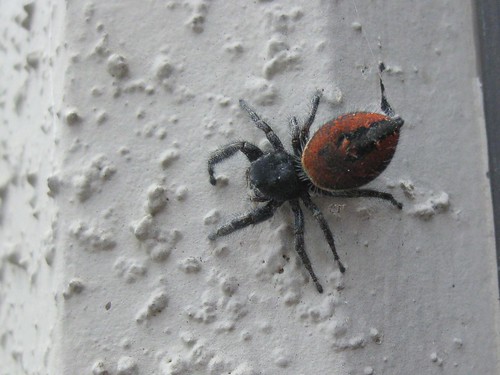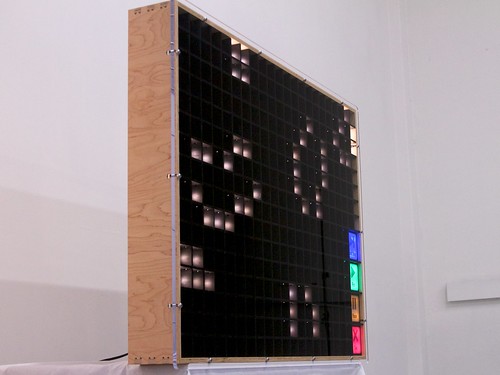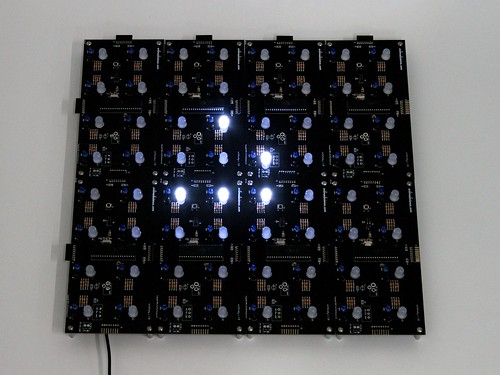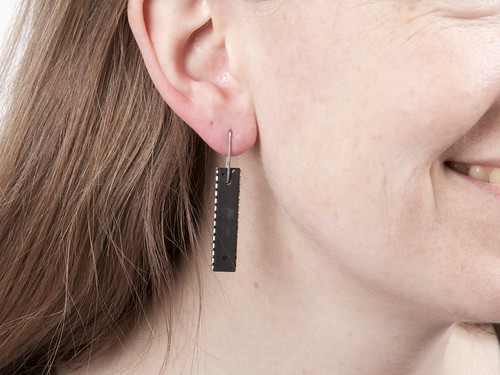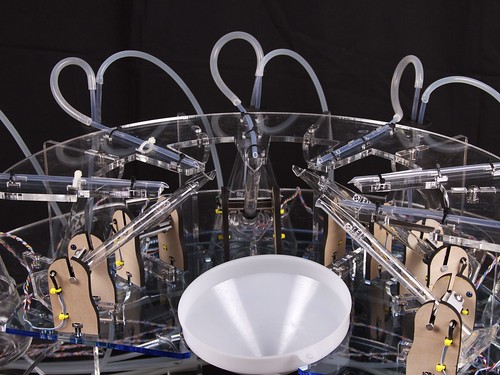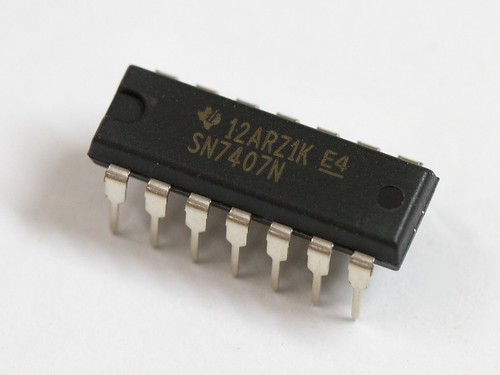One of the great things about building electronics projects is seeing what they inspire other people to do, and the 625 LEDs of the Peggy 2 can be pretty inspiring:
Mark at awe.com did some awesome scrolling text on Peggy 2 and has even shared his sketch for others to use. His video is embedded above or you can click on over to YouTube. Phillip at peilipu’s posterous hooked up a Peggy 2LE and a Danger Shield to play Pong, a game we’re rather fond of.
Phillip at peilipu’s posterous hooked up a Peggy 2LE and a Danger Shield to play Pong, a game we’re rather fond of.
 Nick over at NJS Shredding wired up an off-board Peggy 2, neatly built into a wooden box and mounted to the ceiling. He also posted a video which shows the scale of it quite well.
Nick over at NJS Shredding wired up an off-board Peggy 2, neatly built into a wooden box and mounted to the ceiling. He also posted a video which shows the scale of it quite well.
 Another ceiling mounted Peggy 2 installation was recently posted on the Make blog. This one, with an amazing array of ribbon cables connecting strips of LEDs, is entertaining visitors at the Children’s Museum of Pittsburgh and was created by the late artist Rick Gribenas. Thanks to Matt Mets for sending us the picture!
Another ceiling mounted Peggy 2 installation was recently posted on the Make blog. This one, with an amazing array of ribbon cables connecting strips of LEDs, is entertaining visitors at the Children’s Museum of Pittsburgh and was created by the late artist Rick Gribenas. Thanks to Matt Mets for sending us the picture!
 Also at a museum in Pittsburgh, Deren Guler used a Peggy 2 in a kid-powered generator exhibit at the Carnegie Science Center. Thanks for sending the picture, Deren!
You can read more about Peggy 2 on our store here, and full documentation is available on our wiki here and links to more projects are posted there as well.
Also at a museum in Pittsburgh, Deren Guler used a Peggy 2 in a kid-powered generator exhibit at the Carnegie Science Center. Thanks for sending the picture, Deren!
You can read more about Peggy 2 on our store here, and full documentation is available on our wiki here and links to more projects are posted there as well.





